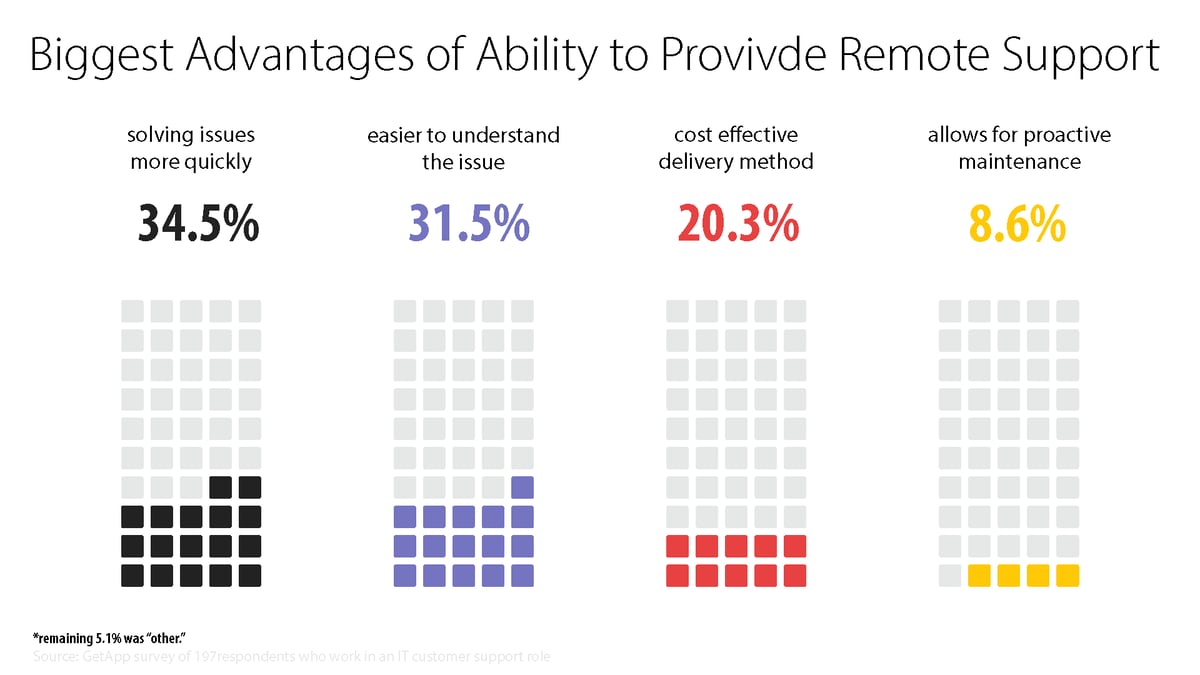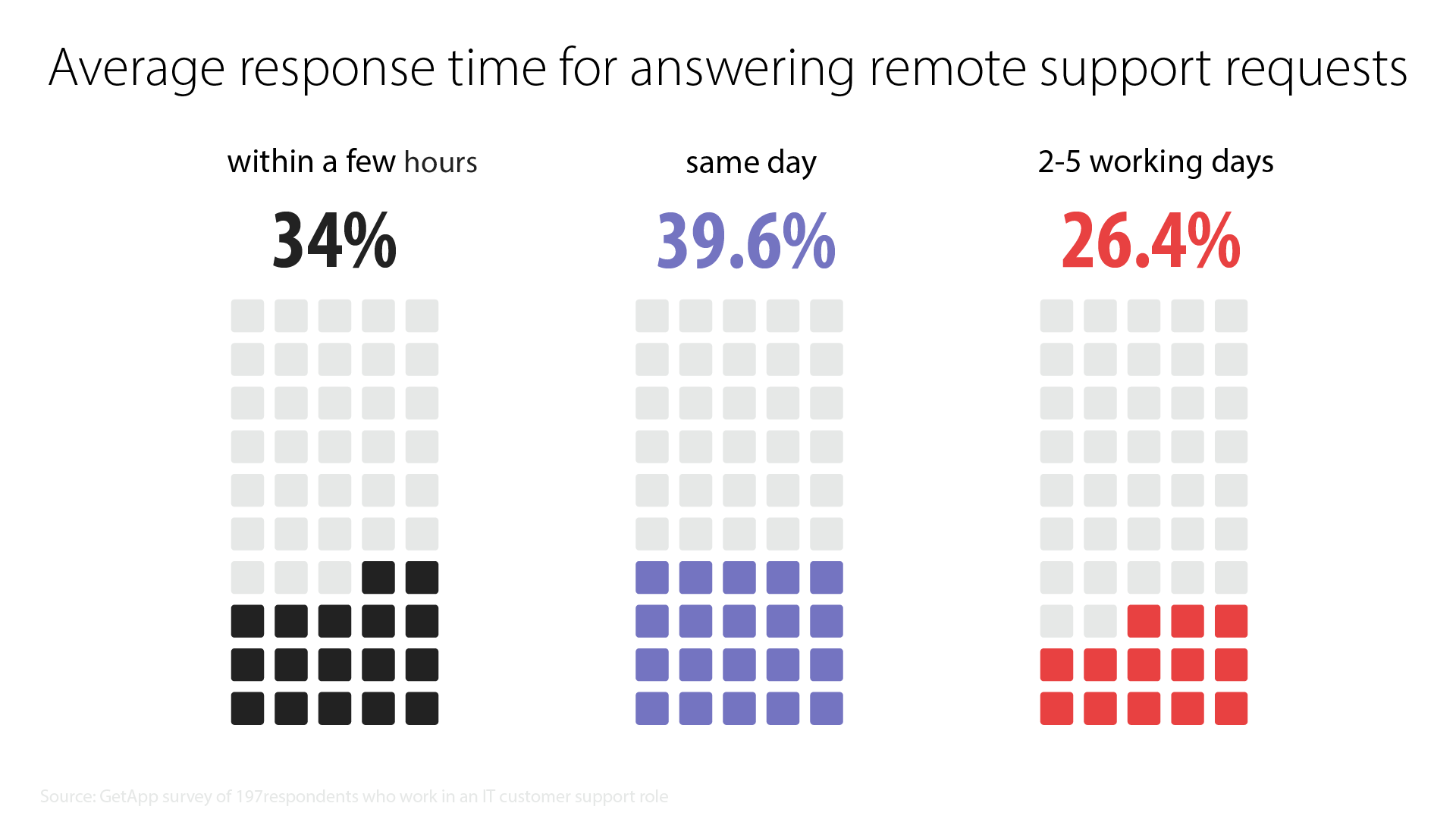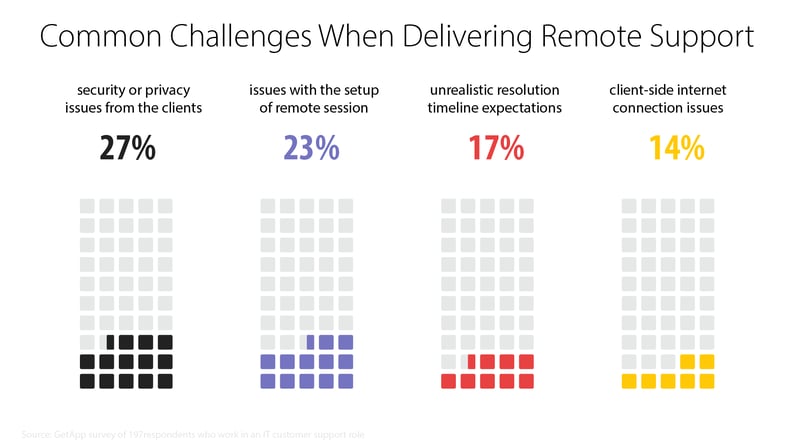Whether you’re working from the office or working from home, one thing is certain; you need your technology to be working for you. When an issue with your device does arise, you’ll probably do one of three things. One, you’ll walk your afflicted laptop down to the IT department to troubleshoot it in-person. Two, you’ll pick up your phone and dial a help desk number or exchange emails to troubleshoot the issue. Or three, you’ll chalk up your failing technology as a sign from the universe that you deserve a break and clock out.
Aside from the support channels outlined above, there is one more option for receiving IT assistance; remote support. While this might not be the first method that comes to mind for you, it’s actually the number one preference for delivering support, according to the help desk agents responsible for carrying out support requests.
So, what exactly is remote support and how is it any different from phone support or email support?
Support delivered over the phone or via email are both “remote” means of delivering assistance, right? Wrong. Here’s where the difference lies -- with remote support from Twinstate Technologies, a help desk technician takes over the afflicted laptop using remote access technology. This allows the technician to be in control of the device without physically being present and solve IT issues for clients in real time. And that’s just one of the many advantages. A survey of nearly 200 IT support agents reveals unexpected benefits (and challenges) of remote support. We’ve outlined key findings from the survey below:
Remote support fosters faster resolutions and clear communication
Agents prefer remote support because the hands on approach and remote access to the afflicted device makes it easier to understand the underlying problem and resolve it quickly. Without access to a clients device, an agent must rely on the client to describe the issue at hand over the phone or in an email. Poor communication and inaccurate descriptions from a client will drag on resolution rates and breed irate clients, even if their inaccurate descriptions are the cause of resolution delays.

Unresolved support issues will elicit frustration from clients and agents. Remote support is the easiest way to avoid irate clients and agents by enabling more timely resolutions.
Managing expectations and setting accurate timelines
Fast resolutions are the best way to keep clients happy with help desk support, however, “fast” is relative to the clients expectations. While 73% of support tickets are resolved within a day, if a client is expecting their issue to be fixed within the hour, even same day resolution can feel like an eternity to them. When an issue prevents them from working, they will want it diagnosed and fixed ASAP.

Unrealistic time expectations were one of the top challenges for delivering support. Being proactive and clear about timelines and resolution expectations will prevent clients from losing their patience.
Most common remote help desk hurdles to overcome

Security and privacy issues were the top challenge encountered when delivering support, according to survey respondents. Typically, this is due to a technical knowledge gap from the client’s end. With the right cybersecurity measures, these privacy and security issues can be eased rather quickly.
While there are certainly some challenges, remote support remains a great option for delivering and receiving IT help for office-based workers and remote workers alike. The benefits are clear. If you think remote support would be good for your organization, we have options for you.

COMMENTS